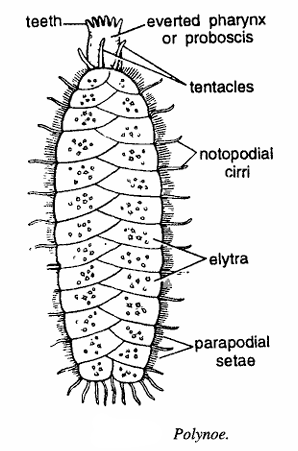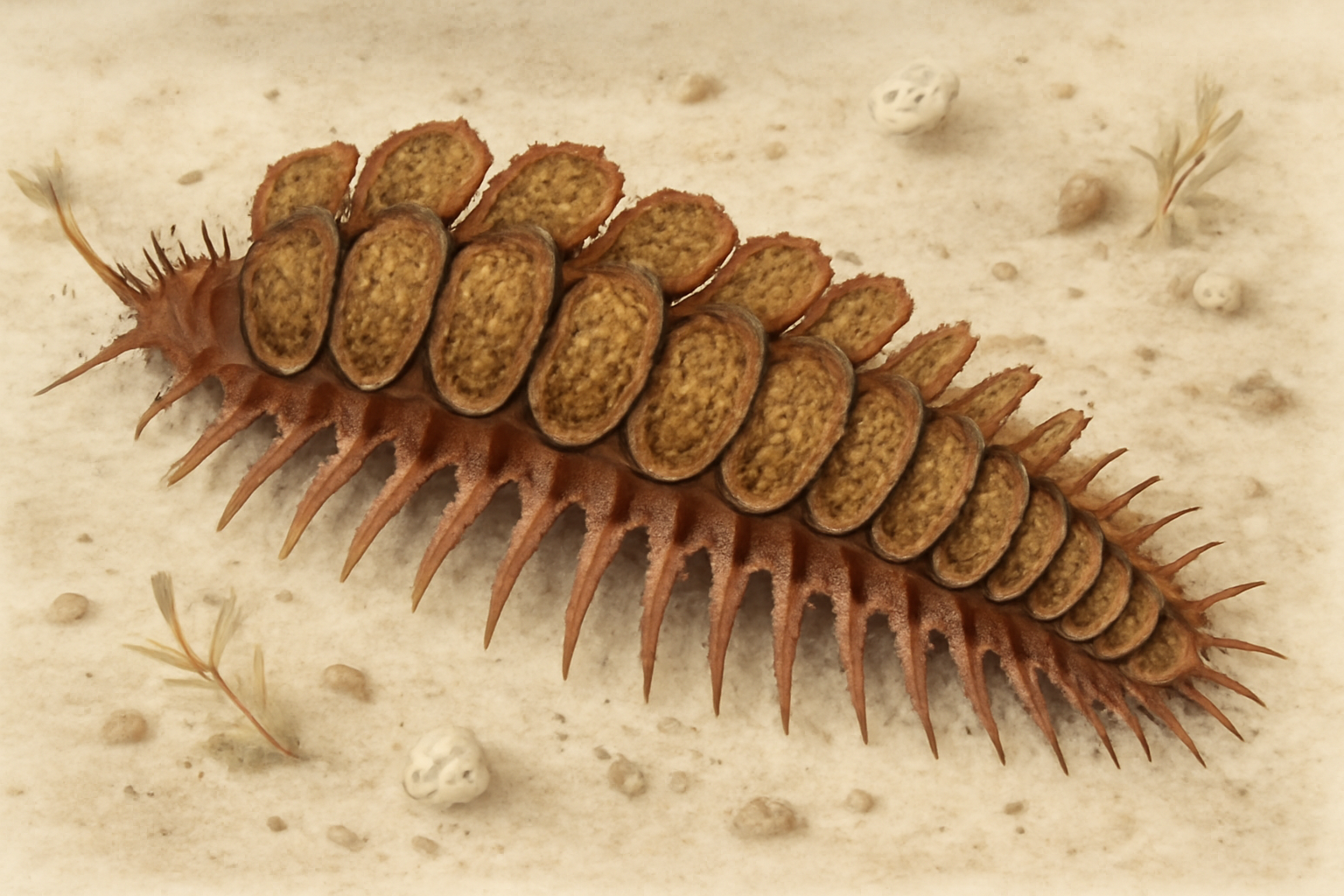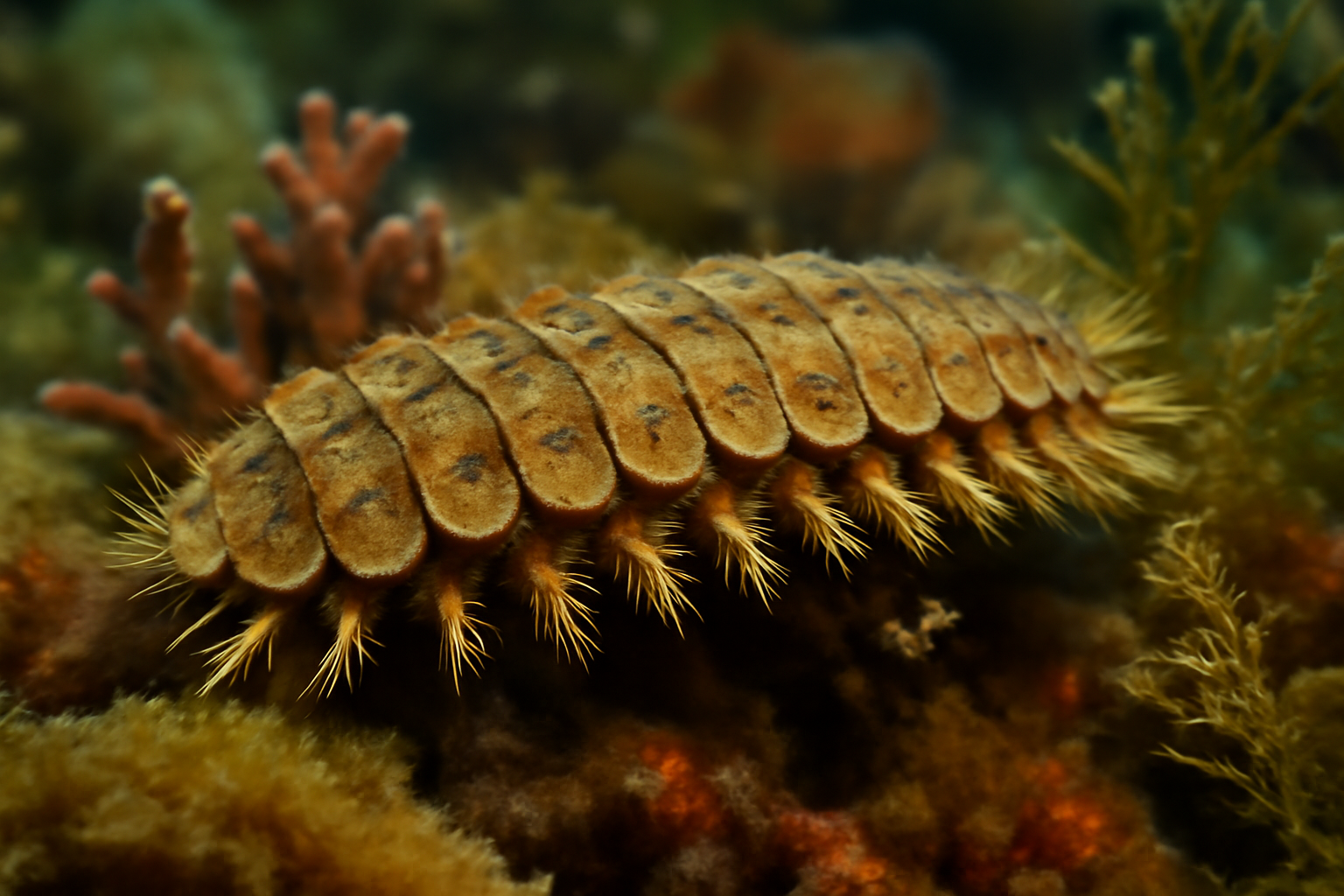Polynoe: Biology, Classification, Habitat, Anatomy, and Ecological Significance of the Marine Scale Worm
Polynoe is a genus of polychaete worms belonging to the family Polynoidae, often collectively known as scale worms due to their distinctive dorsal scales called elytra. These marine annelids inhabit a wide range of oceanic environments from shallow intertidal zones to deep-sea trenches. Polynoe species are characterized by their flattened, segmented bodies covered with protective elytra which can sometimes show bioluminescence. Their active predatory behaviors and inhabitation of complex benthic environments make them an important group in marine ecosystems.
Classification of Polynoe
| Taxonomic Rank | Name | Characteristics |
|---|---|---|
| Kingdom | Animalia | Multicellular eukaryotes with specialized tissues |
| Phylum | Annelida | Segmented coelomate worms with metamerism |
| Class | Polychaeta | Marine worms with parapodia bearing setae |
| Order | Phyllodocida | Free-moving, predatory polychaetes |
| Family | Polynoidae | Scale worms with dorsal elytra-like scales |
| Genus | Polynoe | Marine scale worms with flattened bodies and articulated scales |

Habit and Habitat
Polynoe species are benthic, living primarily on or under rocks, coral reefs, in crevices, or within sponges and other marine invertebrates. These worms prefer sheltered environments where they can seek protection from predators while foraging actively. Their habitats range from shallow coastal waters to depths exceeding 1000 meters in deep sea. Some Polynoe species are known to associate symbiotically with other marine animals, including echinoderms and mollusks.
Geographical Distribution
The genus Polynoe exhibits a cosmopolitan distribution, found in oceanic waters worldwide. They have been reported from tropical, temperate, and polar regions, inhabiting diverse marine ecosystems. Polynoe species are especially numerous in temperate coastal zones and deep-sea habitats, reflecting their adaptability and ecological versatility.

General Characteristics
- It is an allied form of Aphrodite consisting of a short body with parallel sides. The body shows considerable degree of dorso-ventral compression.
- Anterior end is distinguished into head, which bears three tentacles.
- Pharynx is protrusible containing teeth at protruded end. They eat one another. Some posterior parapodia bear setae.
- Certain parapodia instead of cirri bear broad, flattened and scale-like elytra, which constitute protective covering to the back.
- Elytra do not contain setae and have rich nerve supply.
- Elytra are bioluminescent and the illuminating elytra are easily cast off when disturbed or elytra are shed off to deceive the enemy.
- Utility of the casting off of elytra is not known but throwing of it frequently may be to deceive the enemies.
- This is protective device. Fertilized ova and embryos adhere to masses under each elytra.
- Body Form: Polynoe worms have dorsoventrally flattened, elongated segmented bodies covered dorsally by two rows of overlapping elytra (scales) protecting the worm.
- Size: Typically range from a few centimeters up to 20 cm depending on species.
- Elytra: These chitinous scales vary in shape and color, sometimes exhibiting bioluminescence or intricate patterns.
- Segments: The body comprises numerous segments with distinct parapodia on each segment.
- Locomotion: Parapodia equipped with setae facilitate crawling over substrates.
- Sensory Organs: Prostomium bears antennae, palps, and sometimes eyes used for environmental sensing.
- Digestive System: Complete gut with muscular pharynx equipped with jaws for predation.
- Reproductive System: Dioecious with external fertilization; some species exhibit epitokous transformations during breeding.

Special Features
- Elytra and Protection: The elaborate elytra provide physical defense against predators and abrasion in rugged habitats.
- Bioluminescence: In some species, elytra can emit light, which may play roles in predator deterrence or communication.
- Symbiotic Associations: Polynoe is known to form commensal or mutualistic relationships with other invertebrates such as sponges, acting as cleaners or scavengers.
- Adaptations to Varied Depths: Species exhibit morphological and physiological adaptations to cope with pressures and temperatures in deep-sea environments.
- Parapodial Diversity: Specialized parapodia with varied setae types allow precise movement and anchoring in complex habitats.
Identification
Identification of Polynoe species focuses on:
- The shape, size, and arrangement of elytra.
- The number and type of parapodia and setae.
- Morphology of prostomial appendages (antennae, palps).
- Details of the jaws and pharynx.
- Color patterns and bioluminescent properties.
- Molecular and genetic markers in modern taxonomy.
Ecological Role and Importance
- Polynoe worms play vital roles as predators and scavengers in benthic ecosystems, influencing community structure.
- Their burrowing and movement help in sediment turnover and aeration.
- They serve as prey for numerous fish and invertebrates, acting as connectors in food webs.
- Due to their association with other marine organisms, they contribute to biodiversity and habitat complexity.
- Bioluminescent species potentially influence nocturnal marine predator-prey interactions and behaviors.
Conclusion
Polynoe represents a fascinating genus blending intricate morphological adaptations and ecological versatility. As scale worms inhabiting diverse marine environments from shallow reefs to abyssal plains, they demonstrate how annelids have evolved to exploit complex benthic niches. With their protective elytra, active locomotion, and symbiotic practices, Polynoe species are crucial to marine ecosystem dynamics and valuable subjects for marine biological research.
References
- https://en.wikipedia.org/wiki/Polynoidae
- https://www.sciencedirect.com/science/article/abs/pii/S0967064516301643
- https://museumsvictoria.com.au/media/4185/027-044_mmv71_britayevetal3bz_web.pdf
- https://www.cambridge.org/core/journals/antarctic-science/article/hitchhiker-polynoid-polychaetes-in-cold-deep-waters-and-their-potential-influence-on-benthic-soft-bottom-food-webs/24E66B8DCD296A423E71DDC77071DF4E
- https://pmc.ncbi.nlm.nih.gov/articles/PMC4669924/
- https://www.soghracollege.com/img/Letures%2009-05-20/Zoology%20%20Part%201-Classification%20Of%20Annelida%20n-merged.pdf
- https://repository.si.edu/bitstream/handle/10088/3435/PinkBook-plain.pdf
- https://animaldiversity.org/accounts/Polynoe/classification/
- https://zookeys.pensoft.net/article/49349/
- https://www.youtube.com/watch?v=pHDxhWYvQfE
- http://www.sevin.ru/laboratories/Marine_Invertebrates/britayev/Britayev_1991.pdf
- https://uou.ac.in/sites/default/files/slm/BSCZO-104.pdf
- https://www.qu.edu.qa/en-us/research/esc/documents/books/99921-786-1-2.pdf
- https://www.biologydiscussion.com/invertebrate-zoology/phylum-platyhelminthes/polystoma-integerrimum-habitat-structure-and-life-cycle/28819
